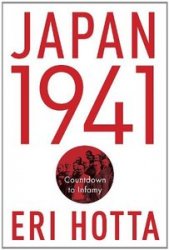The Korean War not only prompted an Allied (half-) peace with Japan, it also primed Japanese rearmament. Given the shortage of US manpower in the region, MacArthur ordered the Japanese government to create a paramilitary 75,000-strong National Police Reserve (NPR) and to augment the Maritime Safety Agency by 8,000 men. A US military advisory group trained the NPR; it, in turn, provided support for US forces in Japan. Initially, Yoshida did not intend to transform the NPR into a bona fide military force. Yet, during the peace negotiations, he grudgingly agreed to create a 50,000-man National Safety Force. In August 1952, the Japanese government established the National Safety Agency (NSA), comprising 110,000 ground troops and a 7,590-man maritime force. Its mandate implied more than domestic police duties.368
The Truman administration’s desire to prompt Japanese rearmament shaped its first policy statement toward postindependence Japan, NSC 125/2. It called for a ground troop buildup to ten divisions and “appropriate levels of air and sea power," and claimed that these measures were necessary for Japan’s self-defense and for its contribution to the common security of the free nations in the Far East and Pacific. In November 1952, the US Joint Chiefs of Staff outlined a plan to establish an air force, a move that made it extremely difficult to argue that Japan’s postwar military would be charged with selfdefense only. These initiatives, moreover, necessitated major US assistance in terms of financial resources and equipment.369
The push for Japanese rearmament had thus begun before Dwight Eisenhower entered the White House. Dulles, now secretary of state for the Republican administration, did not get directly involved in this question. In testimony before Congress on behalf of the Mutual Security Assistance (MSA) program, however, he envisioned a ten-division ground force for Japan, amounting to 325,000-350,000 men. Yoshida’s intent was to extract maximum financial aid from the United States under MSA while agreeing only to token rearmament. The United States, however, made its potential aid strictly proportionate to Japan’s defense buildup.370 Hence the two sides were worlds apart when negotiations began in 1953.
Yoshida sent his protege Ikeda to Washington in October to negotiate with Assistant Secretary of State for Far Eastern Affairs Walter Robertson. During the month-long diplomacy, Ikeda tried to counter the US desire for a large ground force with a more modest proposal to build a force of 180,000 men over three years. In March 1954, the United States and Japan reached an agreement that provided Japan with military equipment amounting to $140 million, another $100 million in offshore military purchases, and US agricultural surpluses for sale within Japan. In exchange, Japan agreed to increase its ground troops to 110,000-140,000 during the initial aid period. Soon thereafter, the Japanese Diet adopted two defense bills. In July 1954, the National Safety Force was renamed the Self-Defense Force, to be administered by a Defense Agency under a director holding Cabinet rank.371
Many historians have portrayed these developments in a Manichean way. Supposedly, Dulles demanded Japanese rearmament, but Yoshida, concerned with economic recovery and cognizant of the depth of pacifism in postwar Japan, resisted the American pressure. But recent studies based on Japanese sources reveal a more complex picture. They suggest that Yoshida essentially accepted moderate rearmament as a necessary price for membership in the non-Communist world. His challenge was to decide how resources should be allocated between the military and the economy. Similarly, Dulles conceded, privately at least, that there was only so much Americans could do to push Japan into rearming under its pacifist constitution - the one they had imposed on it.
By early 1954, the pressure fTom Washington for Japanese rearmament abated, and this question began to recede in US-Japan diplomacy, not so much because of Japan’s resistance as because of a change in American policy. The armistices in Korea in July 1953 and in Indochina in July 1954 drastically reduced military tensions in Asia and produced a new emphasis in US Cold War policies. The Eisenhower administration now concluded that rearmament should be pursued in a way that neither harmed Japan’s economy nor impaired its internal political stability and diplomatic allegiance to the United States. The new US ambassador to Tokyo, John Allison, was at the forefront of this strategic reassessment, which was approved as NSC 5516 in April 1955.372




 World History
World History









